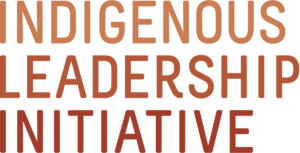New Video Spotlights Indigenous Guardians’ Leadership on the Land
By Valérie Courtois
Gloria Enzoe grew up hearing her mother talk about the love for the land and the need to speak on behalf of the water, air, trees and animals. When the Elders in her community of Lutsel K’e in the Northwest Territories began calling for a local program to manage traditional territory and get youth out on the land, Gloria knew it was a chance to honour her mother’s teachings. In 2008, she helped launch the Ni hat’ni Dene, an Indigenous Guardians program. Now these guardians care for millions of hectares of vibrant boreal forest and vast stretches of Great Slave Lake, one of the largest lakes in the world.
In a new video about Indigenous Guardians, Gloria talks about the far-reaching value of their work.
“We are sustaining our traditional territory not only for us, but for the whole world,” Gloria says. “Our ecosystem is so pure, we have so many trees that we are cleaning up a lot of pollution. It means we are here protecting Mother Earth in order for the rest of the world to live on her.”
The Ni hat’ni Dene guardians are not alone. Across the country, there are about 30 Indigenous Guardians programs helping communities care for the land according to Indigenous knowledge and science. And whether they helping monitor mining in the Yukon or conserving the last wild salmon rivers along the Atlantic Ocean, they are part of something larger.
The Indigenous Guardians are at the forefront of a movement—a movement growing up from the land, from the Elders, from the youth, and from a new crop of women leaders—calling for Indigenous leadership on the land. Interestingly and naturally, many of the existing guardians programs are managed by Indigenous women.
The Government of Canada recently recognized this leadership. The 2017-2018 federal budget announced in March includes an initial investment of $25 million over five years in Indigenous Guardians’ work. This seed funding will help develop a National Indigenous Guardians Network and prepare many Indigenous Nations and communities to launch their own guardian programs.
The budget commitment marks an important step toward Nation-to-Nation and Inuit-to-Crown relationships, because it encourages collaboration between Canadian and Indigenous governments. Minister of the Environment and Climate Change Catherine McKenna says in the video: “We are proud to partner with First Nations in supporting the work of Indigenous Guardians. I am excited to see this network grow because Indigenous Guardians are true stewards of the land, and their work benefits all of us.”
Denenize Basil of the Ni hat’ni Dene Rangers installs an autonomous bird song recorder on a tree near Lutsel K’e, NWT to collect better data on which species depend on the region for nesting grounds. Credit: Ni Hat’ni Dene Rangers
When the guardians describe their work in the video, it’s clear how deep and far-reaching their stewardship runs. They talk about environmental monitoring and land conservation, but they also speak about the importance of connecting youth and Elders, honouring the ancestors and speaking the languages.
Indigenous leadership on the land encompasses all of these dimensions, and together they strengthen Indigenous communities as well as conserve the land.
“A huge aspect of [guardian programs] is healing,” says Kristen Tranche of Fort Simpson in the Northwest Territories. “And getting back in touch with your Indigenous self. If there’s healthy people that are happy and strong in their culture, and if they receive that from being on the land, then it’s a huge investment. You are investing in a better society and a better tomorrow.”
The Indigenous Leadership Initiative is proud to be a part of this movement and will continue to support Indigenous-led models of land governance.
“We are sustaining our traditional territory not only for us, but for the whole world.”
“The Indigenous Guardians are at the forefront of a movement—a movement growing up from the land, from the Elders, from the youth, and from a new crop of women leaders—calling for Indigenous leadership on the land.”
“We are proud to partner with First Nations in supporting the work of Indigenous Guardians. I am excited to see this network grow because Indigenous Guardians are true stewards of the land, and their work benefits all of us.”


